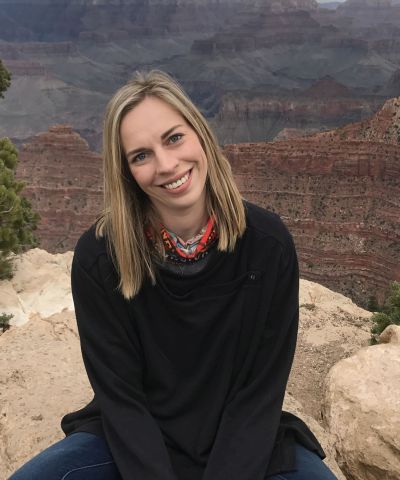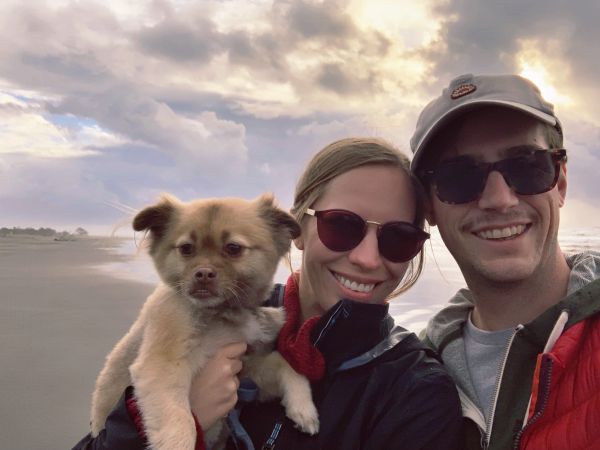As a forest soil scientist, Tom DeLuca has worked in Sweden, the United Kingdom, China, the Rocky Mountains and other far-flung places. He has focused on elemental, environmental and silvicultural cycles that link forest productivity to the soil ecosystem and human activity. He has served in leadership positions at Bangor University in the U.K., the University of Washington and University of Montana.

But when the chance came to advance the legacy of his friend and colleague Thomas Maness and direct one of the world’s leading forestry programs, he jumped. “I’ve known Oregon State as the premier forestry program in the nation, if not the world,” says DeLuca, who succeeds Maness as the Cheryl Ramberg-Ford and Allyn C. Ford Dean of the OSU College of Forestry.
In 2012, at about the time that Maness became dean, DeLuca was hired as director of the School of Environmental and Forest Sciences at the University of Washington. “We gave talks at the same professional meetings, hit it off and became friends.”
DeLuca says he and Maness shared similar perspectives about the future of forestry. “Thomas started things in motion as dean that I’m excited to pick up and advance. For example, if OSU becomes the steward of the Elliott State Forest, we would have a tremendous opportunity to push the limits of what sustainable forest management looks like on the landscape. How can we meet our needs for fiber without degrading habitat?
“I see forestry as a key element of a sustainable future on Earth. Our survival as a species ties directly to forests and all of the attributes that we depend on — whether it’s clean water, air, forest products or diversity of species.”
As a boy growing up in Madison, Wisconsin, DeLuca enjoyed spending time outdoors. His family dabbled in farming and he learned about the value of early mornings and the self-sufficiency demanded by agricultural work. They made frequent backpacking trips to the forests of Idaho and Montana. His strong connection to the woods and the West motivates him today.
“I spend as much time outdoors as I can. I love to be in the woods. I do a fair amount of trail running, skiing and cycling,” he says. As young parents, he and his wife Denise took their three sons Vince, Emile and Henry on outdoor excursions nearly every weekend to instill that same love of the land.
DeLuca has a fondness for books about the land and people pushing their limits — whether physical, emotional or mental. He also enjoys a wide variety of music. However, when it comes to personal accomplishments, he reflects on his own family with gratitude and happiness: “Raising those three boys is probably the best thing I can point to in my life to date.”
It follows that DeLuca places the College of Forestry’s educational mission at the top of his priorities. Kids growing up in urban areas often lack familiarity with rural landscapes, he says, and may associate forestry primarily with clear-cuts.
He notes, however, that in the 1890s, the science of forestry developed in response to the destructive practices of an earlier age. “Forestry was the first environmental science practiced at a landscape level in the United States. We need to reclaim that ground. We need to recapture peoples’ and kids’ imagination around forestry.”
DeLuca believes educational excellence means producing graduates who combine a deep understanding of forest ecosystems with a conservation ethic and strong communication skills.
Toward that end, DeLuca sees his leadership role as enabling faculty and students. “It’s not about me; it’s about us as a college. It’s my job to help create the conditions in which people can do their best work,” he says. “It takes systems thinking and an integration of practice to create an effective team.”
DeLuca recognizes the college has leading institutes and departments, which bring a diversity of perspectives and collaborations to the sustainability challenge. By connecting students with current research, faculty create an exceptional educational experience. Across the state, the OSU Forestry and Natural Resources Extension Program carries the learning to communities that are dealing with issues from wildfire to economic dislocation.
The college has also benefited from the leadership of Anthony S. Davis as interim dean, says DeLuca. “He seized the momentum created by Dean Maness and moved the college forward on multiple fronts, including the completion of the Oregon Forest Science Complex, exploring the creation of the Elliott State Research Forest and the establishment of the Wood Identification and Screening Center at OSU.”
In his research, DeLuca has found the enduring footprint of human activity across the world. For example, in Sweden, where he conducted field work with ecologists and archaeologists, northern forests were regarded as pristine and untouched by humans. However, the Sámi people had managed those forests and alpine tundra for millennia, just as Native peoples exerted a strong influence on forests in North America.
“We have to recognize that humans are part of the landscape,” he says. “They are and always will be.”
A version of this story appeared in the Fall 2020 issue of Focus on Forestry, the alumni magazine of the Oregon State University College of Forestry.












